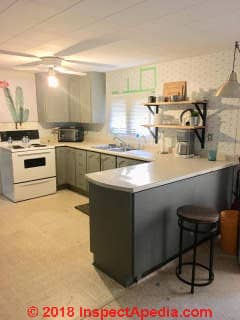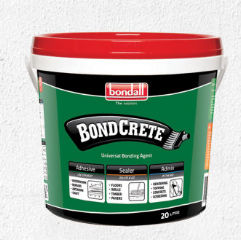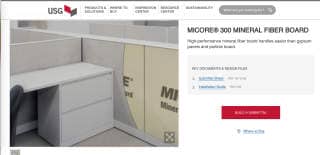 Pinex Ceiling Composition
Pinex Ceiling Composition
Q&A on Asbestos & Fire Resistance of Australia & New Zealand Pinex products
- POST a QUESTION or COMMENT about how to identify & manage ceiling tiles that might contain asbestos
Composition of Pinex ceiling panels. SBI Micore 300 is a mineral fibre board, according to New Zealand Pinex - Woodpro Ltd .
This article series provides photographs and descriptive text of asbestos insulation and other asbestos-containing products to permit identification of definite, probable, or possible asbestos materials in buildings.
InspectAPedia tolerates no conflicts of interest. We have no relationship with advertisers, products, or services discussed at this website.
- Daniel Friedman, Publisher/Editor/Author - See WHO ARE WE?
Asbestos in & Fire Resistance of Australian or New Zealand Pinex Ceilings
How might we best improve the fire-resistance of old Pinex ceilings or similar fiberboard products used as interior ceiling or wall coverings?
We include questions & answers about ceiling tiles that do, do not, or might contain asbestos were posted originally
at ASBESTOS CEILING TILE IDENTIFICATION - be sure to read that article.
Bottom line: the various descriptions of the ingredients in Pinex fiberboard (a Woodpro product) given here tell us that the product is made of wood fibre, probably principally pine wood.
For readers worrying about asbestos in Pinex ceilings, pine wood is a plant fibre, not an asbestos material.
Unless your fiberboard ceilings or walls have already been plastered-over, if you need to improve the fire-resistance of those ceilings or walls check with your local building officials before doing anything costly; you may find that an easy approach is to install a layer of drywall or gypsum board on those surfaces.
On 2018-10-05 by (mod) - SBI Micore 300 is a mineral fibre board compared with wood-fibre NZ Pinex Soft Board
Modern Woodpro "Pinex" is not the same product as the wood-fibre "Pinex" softboard produced in New Zealand between 1941 and the 1960s.
Details about Pinex are at
IDENTIFY PINEX FIBERBOARD from which we excerpt here.
Chiladaki et als. described Pinex's ingredients:
Low-density fibreboard is used widely as insulating board and is commonly referred-to (in New Zealand) by its trade name Pinex.
Over time some changes have occurred in the manufacture of the board, but generally it is the same. . ... [chipped or flaked] wood (Pinus radiata) ... further reduced to wood fibre with the aid of steam ... Starch adhesive as well as different additives are added before the board forming operation, depending on the final product.
... Nowadays 96% of the final product is wood fibre, 2% starch that binds the fibres, 1% wax for moisture resistance. Alum is sometimes added. ... back in the 1940s the wood used would have been solely pine, and most likely no chemicals would have been used, but maize starch [corn starch]. - Chiliadaki 2006.
Excerpting from the modern product description of SBI Micore:
- Chiliadaki, Argyro, and André Page. A NEW ZEALAND COMMUNIST PARTY MURAL: POSTER PAINTS ON LARGE FORMAT FIBREBOARD [PDF] In Restauro: Forum für Restauratoren, Konservatoren und Denkmalpfleger, vol. 112, no. 3, pp. 191-197. 2006.
Thanks to website PDFCandy for assisting us in converting image files to the PDF provided above. https://pdfcandy.com/result/31302511d82d.html
Special thanks to Ulrik Runeberg for providing this citation, 2020/01/05. cf Runeberg, Ulrik, STAINING AND MICROBIOLOGICAL INFESTATION OF ACRYLIC PAINTINGS ON HARDBOARD [PDF] (2008),Conservator (Dipl. Rest./M.A.), Restaurierungszentrum der Landeshauptstadt Düsseldorf, Germany, Email: Rune-Ulrik@gmx.de Previously Museo de Arte Contemporáneo de Puerto Rico, San Juan Presented, April 2007 conference in Richmond Virginia, sponsored by the AIC (American Institute for Conservation), this paper discusses the staining and microbial infestation of acrylic paintings on hardboard. - private correspondence, ER <->DF 2020/01/05 - 2006/09/12. (Also see PAINT FALURE, DIAGNOSIS, CURE, PREVENTION)
We received this follow-up from NZ Pinex - Woodpro Ltd: "From our knowledge Pinex was made from wood chips and cardboard. We are unsure of the exact composition of Pinex."
- Jeanie Attrill and Mark Schroder - Woodpro Ltd
P.O. Box 86014, Rolleston West, 7658, Rolleston
213 Wards Road, RD7, Rolleston, 7677
Email: jeanie@woodpro.co.nz
www.woodpro.co.nz "Our ceiling tiles are made from a sheet material - Micore 300.
You can find out the composition of our material on the internet - Micore 300. "
SBI Micore 300 is a mineral fibre board - shown below. Micore 300 is a fire-resistant board produced by USG US-Gypsum and possibly licensed for production elsewhere. It is also used as a substrate board, covered with other materials, in a variety of application. - Ed.
...
Reader Comments, Questions & Answers About The Article Above
Below you will find questions and answers previously posted on this page at its page bottom reader comment box.
Reader Q&A - also see RECOMMENDED ARTICLES & FAQs
Question: coat Pinex Caneite acoustic softboard with BondCrete to improve fire resistance? Meet fire code?
 I have a question in regards to a ceiling. It is a old accoustic softboard, pinex caneite. I am after weather it is
I have a question in regards to a ceiling. It is a old accoustic softboard, pinex caneite. I am after weather it is
possible to skim coat or render with a gyprock plaster compound mixed with bond Crete to give it joint structure and a nice application finish.
I spoken to some other people but they seem unsure. My question have you ever seen it done and is it possible. I have looked on your site and it says consult your building inspector and you actually give a guide saying it can increase fire retardant and meet future codes.
This house was built in 1975 in Tasmania, Australia. Any advice would be very much acknowledged and appreciated.
Kindest, Good day. - Anonymous by private email 2021/10/27
Moderator reply: not the best approach
Thank you for a helpful question on covering exposed fiberboard walls or ceilings at building interiors to improve fire resistance and to meet contemporary fire and building codes.
Indeed some fibreboards were used as a plaster base to form a wall system that might, when plastered, meet current fire codes and standards.
But for buildings where the original fiberboard ceilings or walls remain, a more-effective and probably considerably less-costly approach to fire safety improvement that is more-likely to find easier approval by your local building officials, would be to simply install a layer of drywall, or where-needed, fire-rated drywall, over the existing fiberboard.
In our OPINION that approach requres less skill, less labor expense, and is faster than skim-coating the exposed surfaces with BondCrete.
For other readers:
BondCrete is described by Bondall, its manufacturer as a bonding and sealing agent, not as a fire-resistance improvement coating. A typical application for BondCrete is for concrete floor topping or patching on concrete floors or driveways, applied in the mm- thickness range. It is also used to improve bonding onto steel-form structural concrete and for tiling over old or new concrete surfaces.
BondCrete might also be used to bond quarry tile or ceramic tile to timber floors, atop a layer of fiber cement sheathing. (BondCrete 2021)
Watch out: nowhere in the product description does the manufacturer recommend use of BondCrete as a fire-resistance coating used over soft fiberboard products like Pinex.
BondCrete Universal Bonding Agent Australian made since 1951, this versatile Bonding & Sealing agent has developed and improved for your building and renovating needs. The result is one of the strongest high solids bonding agents on the market. Our exclusive resin additive ensures maximum bonding every time. It’s so strong there is little need to hack, chip or acid etch the surface before bonding. - Source: Bondall, retrieved 2021/10/27 original source: https://www.bondall.com/concrete-additives/bondcrete/
- Bondall, BondCrete APPLICATION GUIDE [PDF] Bondall, 113 Belmont Ave. Belmont, Western Australia 6104 Tel: (08) 6272 3800 Email: bondall@bondall.com Website: www.bondall.com - retrieved 2021/10/27 original source: vhttps://www.bondall.com/wp-content/uploads/BC_DL_MAG_110420.pdf
At FIBERBOARD SHEATHING - home - we discuss fire rating and fire resistance questions for fiberboard products including ones like Pinex or Caneite - made from plant fibres.
At FIBERBOARD SHEATHING FIRE RATINGS we give flame spread classifications for several building materials including fiberboard - placing it in flame-spread class III.
On 2020-07-29 by Sean
After all the reading I have done I am still very confused about whether Pinex ceiling tiles used commonly in NZ in the 60's & 70"s may contain asbestos. In fact was asbestos ever used in NZ pinex?
On 2018-09-30 by (mod) -
Liping
No, not likely in a wood-product fiberboard.
I suspect from the name that it's a cellulose or wood product (made from pine and starch) but I do not know.
I'm researching and will add information here.
I have not come across Pinex softboard and would be glad to do some further research on it.
Some photos of the ceiling material face, back, edge, and any stampings or markings would help alot.
There is a New Zealand Nz Pinex ceiling tile product. Is that what we're discussing? If so, this New Zealand company is familiar with that product: http://woodpro.co.nz/ceiling-tiles/
WoodPro
Wards Road Rolleston, Christchurch 7614 New Zealand Phone: 027 446 4355
I asked WoodPro to comment; Are you in NZ?
On 2018-09-28 by Liping - Would Pinex softboard ceilings in a 1975 house contain asbestos?
Hi
Would Pinex softboard ceilings in a 1975 house contain asbestos?
...
Continue reading at DO THESE CEILING TILES CONTAIN ASBESTOS? or see ASBESTOS TESTING LAB LIST for access to certified asbestos testing labs, or select a topic from the closely-related articles below, or see the complete ARTICLE INDEX.
Or see these
Recommended Articles
- ASBESTOS CEILING TILE IDENTIFICATION
- CEILING TILE HISTORY / DATES - asbestos ceiling tile history & Dates
- CEILING TILE MANUFACTURER ID
- ASBESTOS-FREE CEILING TILES
- CEILING TILE IDENTIFICATION - home, all brands
- CEILING TILE INGREDIENTS
- CEILING TILE REMOVAL PROCEDURES
- CEILINGS, DROP or SUSPENDED PANEL
- ASBESTOS CEILING TILE IDENTIFICATION - 5 Easy Steps to tell if CEILING TILES are likely to contain asbestos
- ASBESTOS FLOORING IDENTIFICATION 1950's or LATER in New Zealand
- ASBESTOS TESTING LAB LIST - certified asbestos testing labs
- FIBERBOARD SHEATHING IDENTIFICATION - identify types of fiberboard
Suggested citation for this web page
PINEX CEILING TILES at InspectApedia.com - online encyclopedia of building & environmental inspection, testing, diagnosis, repair, & problem prevention advice.
Or see this
INDEX to RELATED ARTICLES: ARTICLE INDEX to ASBESTOS HAZARDS
Or use the SEARCH BOX found below to Ask a Question or Search InspectApedia
Ask a Question or Search InspectApedia
Try the search box just below, or if you prefer, post a question or comment in the Comments box below and we will respond promptly.
Search the InspectApedia website
Note: appearance of your Comment below may be delayed: if your comment contains an image, photograph, web link, or text that looks to the software as if it might be a web link, your posting will appear after it has been approved by a moderator. Apologies for the delay.
Only one image can be added per comment but you can post as many comments, and therefore images, as you like.
You will not receive a notification when a response to your question has been posted.
Please bookmark this page to make it easy for you to check back for our response.
IF above you see "Comment Form is loading comments..." then COMMENT BOX - countable.ca / bawkbox.com IS NOT WORKING.
In any case you are welcome to send an email directly to us at InspectApedia.com at editor@inspectApedia.com
We'll reply to you directly. Please help us help you by noting, in your email, the URL of the InspectApedia page where you wanted to comment.
Citations & References
In addition to any citations in the article above, a full list is available on request.
- In addition to citations & references found in this article, see the research citations given at the end of the related articles found at our suggested
CONTINUE READING or RECOMMENDED ARTICLES.
- Carson, Dunlop & Associates Ltd., 120 Carlton Street Suite 407, Toronto ON M5A 4K2. Tel: (416) 964-9415 1-800-268-7070 Email: info@carsondunlop.com. Alan Carson is a past president of ASHI, the American Society of Home Inspectors.
Thanks to Alan Carson and Bob Dunlop, for permission for InspectAPedia to use text excerpts from The HOME REFERENCE BOOK - the Encyclopedia of Homes and to use illustrations from The ILLUSTRATED HOME .
Carson Dunlop Associates provides extensive home inspection education and report writing material. In gratitude we provide links to tsome Carson Dunlop Associates products and services.


